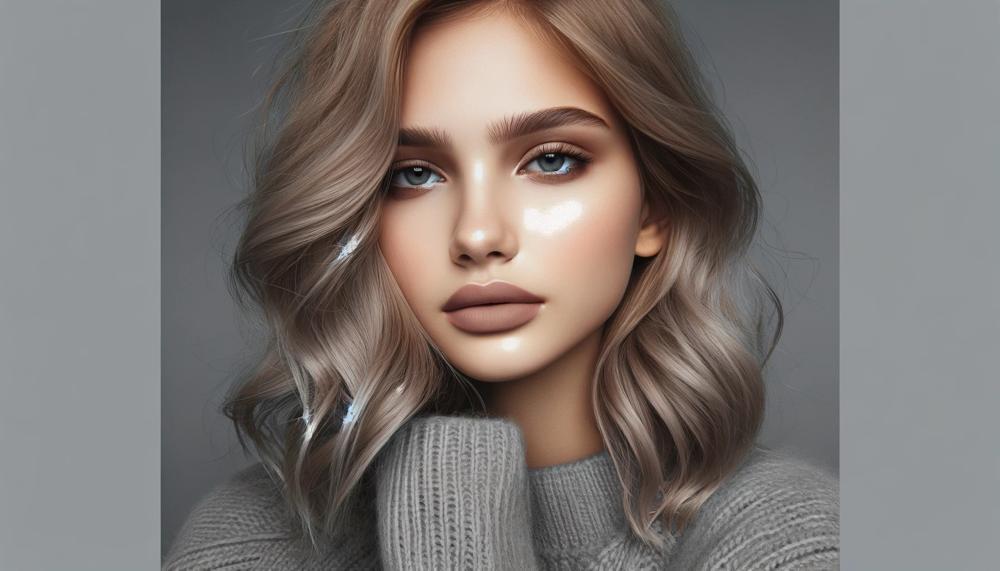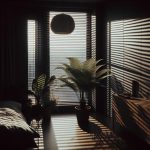Are you considering painting your walls with Agreeable Gray but hesitant because you’ve heard it might be too dark? You’re not alone in your uncertainty. This popular neutral paint color from Sherwin Williams has sparked a debate among homeowners and interior designers alike.
Some swear by its versatility and warmth, while others find it too dark for their liking. The question remains: is Agreeable Gray truly too dark? Let’s delve into the topic with some key points to consider.
First of all, what exactly is Agreeable Gray? It’s a warm greige (gray + beige) color that can appear different depending on the lighting in your space. Its light reflectance value (LRV) of 60 puts it in the mid-tone range, meaning it reflects more light than darker shades. This makes it a great option for those looking for a balance between light and dark colors.
However, as with any paint color, there are several factors that can affect how Agreeable Gray looks on your walls. Lighting, room size, and furniture can all play a role in how the color appears. In smaller rooms or spaces with limited natural light, some may find Agreeable Gray to be too dark. On the other hand, many love the cozy and inviting feel it creates in larger spaces or rooms with ample natural light.
Ultimately, whether or not Agreeable Gray is too dark is a matter of personal preference and the unique characteristics of your home. The best way to determine if it’s right for you is to test out paint samples in your own space before committing to a full room makeover. Don’t let the debate discourage you from trying out this popular paint color – who knows, you might just fall in love with its warm and welcoming charm.
Contents
- 1 What Color is Agreeable Gray?
- 2 Agreeable Gray in Different Lighting
- 3 Agreeable Gray Undertones
- 4 Where You Can Use SW Agreeable Gray
- 5 Colors Similar to Agreeable Gray
- 6 Wondering How To Pick the Perfect Paint Color?
- 7 Agreeable Gray Color Palettes
- 8 Trim Color for Agreeable Gray – Sherwin Williams Pure White
- 9 Is Agreeable Gray Popular in 2023?
- 10 Pros And Cons of Agreeable Gray
- 11 Conclusion
What Color is Agreeable Gray?
Agreeable Gray is situated on the lighter end of the color spectrum with a Light Reflectance Value (LRV) of 60. It’s not a dark shade, but it’s also not classified as “washed-out bordering on off-white” light.
| LRV (Light Reflectance Value) | Color Category | Light/Dark Scale |
| 0-50 | Dark | Agreeable Gray: On the Lighter Side |
| 51-100 | Light |
Agreeable Gray is a popular choice among homeowners due to its mix of gray and beige, making it a versatile and appealing option for various rooms in the house. Its warm undertones create a welcoming and cozy atmosphere, while its light hue helps to brighten up spaces. However, it’s important to note that the lighting in a room can affect how Agreeable Gray appears.
In comparison to other well-known gray paints, such as Versatile Gray, Agreeable Gray is on the lighter side. Versatile Gray tends to have darker undertones and may not be suitable for all spaces due to lighting concerns. Therefore, if you’re searching for a light and adaptable gray paint, Agreeable Gray may be the perfect solution.
Before painting larger areas with Agreeable Gray, it’s recommended to start with smaller rooms as testers. Hurrying through the painting process can lead to mistakes and an uneven finish, so it’s essential to take your time and ensure quality. This will also help you determine if Agreeable Gray is the right shade for your space.
Agreeable Gray in Different Lighting
The illumination that originates from nature can greatly impact the way Agreeable Gray appears on your walls. In rooms with an abundance of natural light, this paint color will exude a warm and inviting feeling, highlighting its subtle green undertones. However, in spaces with less natural light, the hue may come across as darker and more subdued.
Moreover, the type of natural light present can also play a role in how Agreeable Gray looks on walls. For instance, north-facing rooms tend to have cooler and bluer lighting, which may downplay the green undertones in Agreeable Gray. Conversely, south-facing rooms typically have warmer and yellower lighting, which can enhance the green undertones in the paint.
To combat the effects of natural lighting on Agreeable Gray, you may want to consider adding more artificial lighting or opting for a lighter shade of gray with green undertones. This can help balance out any potential muddiness in the color.
It’s important to keep in mind that natural lighting is just one aspect to take into consideration when selecting a paint color. The permanent elements and furnishings in your home should also be factored in, as they can influence how the paint appears on walls. That’s why it’s always recommended to test out paint samples in your specific space before making a final decision.
Agreeable Gray Undertones

The color Agreeable Gray is known for its warm undertones, combining beige and gray to create a welcoming “greige”. However, it also contains slight green undertones that may appear more prominent in certain lighting situations.
These undertones have the ability to alter the overall appearance of the color in a room, producing various visual effects.
| Undertone | Description | Effect on Appearance |
| Warm (Beige/Gray) | The primary undertone found in Agreeable Gray | Emanates a warm and inviting atmosphere in a room |
| Slight Green | The secondary undertone found in Agreeable Gray | In certain situations, can become more pronounced and create a cooler tone in the room |
Where You Can Use SW Agreeable Gray
SW Agreeable Gray is a versatile choice for wall color in your home, suitable for a variety of areas. It shines in common areas such as the living room, bedroom, kitchen, bathroom, and even your home office. Its warm and neutral tones make it an excellent option for creating a cozy and inviting atmosphere in these spaces.
In the living room, SW Agreeable Gray can add warmth and depth to the space, creating a welcoming and comfortable environment for you and your guests. In the bedroom, it can create a peaceful and serene atmosphere, perfect for relaxation and sleep. In the kitchen, this color can add a touch of elegance and sophistication while still maintaining a cozy feel. The bathroom is another area where SW Agreeable Gray thrives, providing a calming and spa-like ambiance. And in your home office, this color can promote productivity and focus while also providing a sense of comfort.
But these are just some common areas where SW Agreeable Gray shines. This color can also be used in other areas of your home, such as the dining room or hallway. Its neutral tones make it easy to pair with various decor styles and colors, giving you endless possibilities for creating a personalized and unique space.
Colors Similar to Agreeable Gray
If you adore the appearance and sensation of Agreeable Gray but crave to experiment with a brighter or darker hue, here are some alternative colors to contemplate:
| Lighter Shades: | ||
| SW Light French Gray | Benjamin Moore Revere Pewter | Sherwin Williams Passive |
| Darker Shades: | ||
| SW Gauntlet Gray | Benjamin Moore Chelsea Gray | Sherwin Williams Dovetail |
All of these colors possess a comparable neutral and warm undertone akin to Agreeable Gray, rendering them phenomenal options for creating a comfortable and alluring space. However, bear in mind that lighting and other elements in your room may impact how a color appears on your walls, thus it’s always advisable to test out a few samples before committing to a new paint color.
Another possibility is to remain within the same chromatic family and select a lighter or darker shade of Agreeable Gray itself. Sherwin Williams offers diverse variations of gray that closely resemble Agreeable Gray, such as Repose Gray or Worldly Gray.
Additionally, you can also contemplate complementary hues for Agreeable Gray. These are colors that lie opposite on the color wheel and produce a dynamic contrast when combined. For Agreeable Gray, complementary shades include hues from the orange family, such as Benjamin Moore Boothbay Gray or Sherwin Williams Accessible Beige.
Wondering How To Pick the Perfect Paint Color?
When searching for the ideal paint color for your home, there are several important factors to keep in mind. While Agreeable Gray may be a highly sought-after and versatile choice, it’s crucial to ensure that it will complement your specific space. Here are some helpful tips to determine if Agreeable Gray is the right hue for your home without appearing too dark.
- Take Note of Undertones: As previously mentioned, undertones play a significant role in selecting the perfect shade of gray. This is especially critical when it comes to Agreeable Gray, as its warm undertones can give off a darker appearance in certain lighting situations. Be sure to examine the undertones of your current furniture and finishes in the room to ensure they will harmonize with Agreeable Gray.
- Consider Lighting: Lighting is another crucial factor in choosing the right paint color. The amount and type of natural light that enters a room can greatly impact how a color looks. In the case of Agreeable Gray, it may appear darker in rooms with limited natural light. Consider testing paint samples in various areas of the room and at different times of day to see how it appears in different lighting conditions.
- Test Samples: It’s always recommended to test paint samples before committing to a color. This is especially important with shades of gray, as they can vary significantly depending on their surroundings. Be sure to try Agreeable Gray on multiple walls in the room and at different times of day to get a better sense of how it will look overall.
- Coordinate with Furniture and Finishes: If you have specific furniture or finishes that you want to complement with Agreeable Gray, be sure to bring swatches or samples when testing paint colors. This will help you determine if the gray will work well with your existing pieces.
- Be Patient and Don’t Settle: Selecting the perfect paint color takes time and patience. Don’t feel pressured to make a hasty decision or settle for a color that you’re not entirely satisfied with. It’s worth taking the time to test multiple shades and find the one that truly enhances your space.
- Evaluate the Lighting in Your Space: As mentioned earlier, lighting is a critical factor in choosing the right shade of gray. If your room receives limited natural light, you may want to consider a warmer shade of gray to avoid creating a dark and chilly atmosphere. On the other hand, if your room gets plenty of natural light, you may be able to opt for a cooler gray without it appearing too dark.
By considering these tips and testing samples, you can ensure that Agreeable Gray is the perfect shade for your home without looking too dark.
Agreeable Gray Color Palettes
Some recommended color palettes to complement this alluring shade include tranquil blues, elegant greens, warm neutrals, and bold accents like deep burgundy or navy. These colors can be incorporated in various ways, such as through furniture, accessories, or accent walls, to achieve an inviting and balanced environment.
Incorporating bold accents in deep shades adds depth and visual interest to the room while still complementing the warmth of Agreeable Gray.
| Color Palette | Colors | Description |
| Tranquil Blues | Light blue, aqua, navy | This palette adds a sense of calmness to the space and complements the warmth of Agreeable Gray. |
| Elegant Greens | Olive green, sage, emerald | This palette infuses a touch of elegance and nature-inspired hues into the room. |
| Warm Neutrals | Cream, beige, tan | This palette creates a cozy and welcoming atmosphere while maintaining a neutral color scheme. |
| Bold Accents | Burgundy, navy, mustard yellow |
Trim Color for Agreeable Gray – Sherwin Williams Pure White
In order to achieve a cohesive and contemporary appearance, there are various options for trim colors that pair well with Agreeable Gray using Sherwin Williams Pure White.
These include Pure White SW 7005, Dover White SW 6385, Alabaster SW 7008, SW Extra White, BM Decorator’s White, SW Greek Villa, SW Shell White, SW Princeton White, and SW Swiss Coffee. These warm-toned white shades beautifully complement the warm gray tones of Agreeable Gray.
Additionally, these colors have a high LRV (Light Reflectance Value), which helps to brighten up the space and create a sense of openness.
Is Agreeable Gray Popular in 2023?
Undoubtedly, Agreeable Gray will continue to reign as a top choice for interior design in 202Its timeless and adaptable qualities make it a perfect foundation for creating aesthetically pleasing and balanced living spaces. In addition, it effortlessly complements various design styles, such as the sleek modern minimalism or the charming rustic chic, making it a versatile color option.
Color coordination plays a crucial role in interior decor, and in 2023, the latest trends include incorporating nature-inspired palettes, eco-friendly materials, and sustainable design. Agreeable Gray seamlessly aligns with these trends, making it a popular choice for those who want to infuse these elements into their home.
Furthermore, specific decor trends for 2023 may include utilizing Agreeable Gray in sustainable and eco-friendly designs or incorporating nature-inspired decor. This color also pairs beautifully with other popular shades like serene blues, sophisticated greens, warm neutrals, and bold accents, giving endless possibilities for interior design.
To coordinate colors with Agreeable Gray, having an understanding of color theory and design principles is essential. This knowledge allows for the creation of cohesive and visually appealing spaces. Some exciting ways to incorporate Agreeable Gray in 2023 include experimenting with different textures, adding accent walls, combining it with striking patterns, or using it as a unifying color in an open-concept space.
Pros And Cons of Agreeable Gray
Agreeable Gray is a well-liked hue option with a range of benefits and drawbacks. One of the primary benefits is its adaptability, neutral undertone, and light reflectance value. However, it may also have some downsides such as its popularity, washing out in direct light, and not pairing well with certain colors. It’s crucial to take into account these pros and cons when deciding on Agreeable Gray as your home’s paint color.
In my experience, while Agreeable Gray is a popular choice among homeowners, its widespread usage may lead to a lack of uniqueness in your home’s appearance. Additionally, in my opinion, it can be challenging to find the perfect complementary colors for this shade due to its neutral undertone. However, once you find the right combination, the light reflectance value of Agreeable Gray can create a warm and inviting atmosphere in your home.
On the other hand, one of the biggest disadvantages of Agreeable Gray is its tendency to wash out in direct light. This can make the color appear dull and uninviting. To combat this issue, I suggest using this color in rooms with ample natural light or supplementing it with brighter accent colors to add depth and dimension.
Lastly, while Agreeable Gray may clash with certain colors, I have found that it pairs well with earthy tones such as greens and browns, creating a calming and nature-inspired feel in a space. It also serves as a great base color for incorporating pops of bolder shades like navy blue or mustard yellow.
Conclusion
In conclusion, the question of whether Agreeable Gray from Sherwin Williams is too dark has sparked a lively discussion among homeowners and interior designers.
However, as with any paint color, its perceived darkness can vary depending on factors such as lighting and room size. While its light reflectance value of 60 places it in the mid-tone range, some may find it too dark in smaller or dimly lit spaces while others adore its cozy and inviting feel in larger, well-lit rooms.
Ultimately, the decision on whether to use Agreeable Gray comes down to personal preference and the unique characteristics of your home. To truly determine if it’s the right fit for your space, it’s best to test out paint samples in your own environment before committing to a full room makeover.





